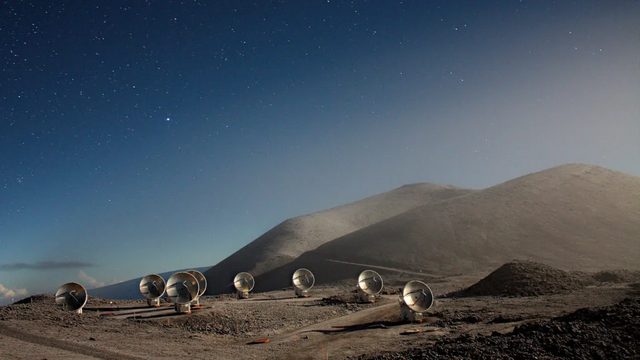Humanity’s second cosmic black hole image captures Sagittarius A*, the giant object at the center of the Milky Way
Mankind’s second black hole image.
A team of scientists from the Harvard & Smithsonian Center for Astrophysics has provided humanity with a photo of a cosmic black hole for the second time. More special than before, the new image depicts a giant black hole located in the middle of the dear Milky Way.
The new image was taken by the Event Horizon Telescope (EHT), which is also the instrument that completed humanity’s first black hole image in 2019. The team kept an eye on it at the same time. both massive bodies, but the complex nature of the research led them to undertake two projects in turn.
“This is our supermassive black hole. This is the center of the area where we liveg,” said Peter Galison, director of Harvard’s black hole research project and member of the EHT control group.
The object in the image is Sagittarius A, and also has a similar appearance to the black hole of the galaxy Messier 87 that has been photographed before. Both images show a red-hot halo, the amount of matter circling a black hole that can absorb even light, through its invincible gravity.
The new image confirms the existence of a giant black hole located at the center of the Milky Way, 27,000 light-years away. It strengthens theories that these massive objects exist at the centers of galaxies, and helps us explain how galaxies form.
“Seeing the ring of light surrounding the black screen was great once, but now that we have seen it a second time, we are beginning to confidently confirm that the center of the galaxy contains giant black holes, twice the mass of the Sun. millions or even billions of times” Mr. Galison said.

Part of the EHT system.
The researchers “captured” the image using the Event Horizon Telescope, a worldwide network of interconnected radio devices that transforms Earth into a one-of-a-kind observing device. In April 2017, with eight radio observatories located on 6 mountain peaks of 5 continents, astronomers continuously observed the pair of black holes for 10 days; one is located at the center of the elliptical galaxy Messier 87 (M87), and the other is Sagittarius A (Sgr A*) in the middle of the Milky Way.
From a large amount of data, the supercomputer’s algorithm analyzes the significant number and creates an image of the black hole of the galaxy M87. After obtaining the first image of a black hole in 2019, scientists can focus on studying Sgr A*.
“Compared to M87, which is one of the largest black holes in the known universe, and also shoots a jet of matter through its entire galaxy, Sgr A* offers a glimpse into an elementary black hole, im quiet and meek,” said astrophysicist on the team that runs the Event Horizon Telescope Michael Johnson.
Simulation models of M87 and Sgr A*, we can see that the matter around Sgr A* moves extremely fast (equal to the speed of light) due to the small size of the black hole.
By comparing the two images, the research team was able to deduce how black holes work, learn how they interact with the surrounding space, and determine the role of supermassive black holes in the universe. the formation and maintenance of a galaxy.
To describe the difference between the two black holes, Sara Issaoun of NASA compared the black hole of M87 to an adult sitting still and waiting to be photographed. Meanwhile, Sgr A* is a boy running around, while the photographer shoots the exposure. That causes the finished image to contain a lot of blur. And yet, the EHT will still have to see through a sky filled with dust and gas, which causes light to scatter in space.
Faced with so many challenges, the EHT executive team decided to study each black hole in turn. They patiently used computational methods to create thousands of images, then combined them into the final product. The team had to do this twice with two black holes, and the latest image is the result of tireless efforts.
Research is still a long way off. The team of scientists is planning ngEHT, the New Generation Event Horizon Telescope: this will be an instrumentation that will be able to film a black hole. Instead of a telescope, humanity will possess a planetary-scale camera. By then, the most mysterious features of the black hole will be gradually revealed in high-resolution footage.
According to Harvard Edu, WSJ
at Blogtuan.info – Source: cafebiz.vn – Read the original article here



